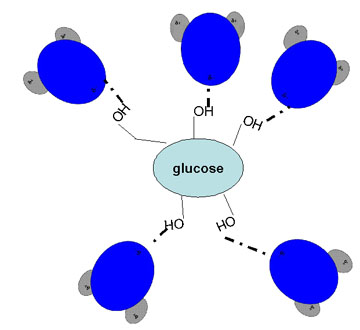
In a previous post I reviewed a recently published article on beer aging. I got so interested that I found a review of the chemical changes occurring in beer written by the same authors. While it might have been helpful do that before writing the previous post, it was writing that post that got me interested in reading more about this topic.
As mentioned, the problem with beer shelf-life is that it isn’t really stable [no food is – most food would be defined a “metastable”. Yep, even Twinkies]. During storage, chemicals continue to react which alters the flavor, both taste and smell. This can be positive; for example, wine and whiskey are left to “age” so that their flavors can develop; In beer, the flavor changes are typically seen negative as the beer no longer tastes as it ought. It might not taste “bad” but it tastes differently to expectation. This is particularly important for branded beers. A regular drinker of Heineken[*] knows what taste to expect and would be disappointed if it tasted differently. This is not just beer, but all food. For example, if are you used to eating Kellogg’s Cornflakes and then try switching to the store labeled corn flakes, the taste just is not the same.
So what happens to beer during storage? In the article reviewed in my previous post, they looked at fifteen different markers which were produced by several different reactions. According to the article I am discussing today (“The chemistry of beer aging – a critical review) the main reactions taking place in packaged beer are:
1) Reactive oxygen species in stored beer
2) Reaction leading to formation of carbonyl compounds
a. Oxidation of higher alcohols
b. Strecker degradation of amino acids[†]
c. Aldol condensation
d. Degradation of hop bitter acids[‡]
e. Oxidation of unsaturated fatty acids, including enzymatic breakdown
f. Formation of (E)-beta-damascenone
3) Acetalization of aldehydes
4) Maillard reaction
5) Synthesis and hydrolysis of volatile esters
6) Formation of dimethyltrisulfide
7) Degradation of polyphenols
Having teased you with that list, I am now going to ignore it completely to discuss inhibition.
The most important way beer in which beer chemistry changes during in storage is through oxidation reactions. In the list above at least three of the staling mechanisms are directly caused by oxidation, if not more. So beer can be protected by limiting the amount of oxygen present when the beer is bottled. This includes both headspace and dissolved oxygen. It is also why you won’t see beer in plastic bottles any time soon[§].
Oxidation can also be prevented by the addition of antioxidants. These include sulphite, which is produced by yeasts in beer from sulphate; polyphenols from barley malt and hops; melanoidins produced by the Maillard reaction during heating steps such as malt roasting and wort boiling. Ascorbic acid and chelating agents could also be added after processing.
The prevention of enzymatic oxidation is also important. The enzymes which cause the problems in beer are lipoxygenases. Their activity may be reduced by lowering the pH. Additionally, choosing barleys with low lipoxygenase activity might also help. You could heat the malt to a temperature that would cause the enzyme to be destroyed, but this will destroy desirable enzymes.
Non-oxidative beer aging reactions are very diverse and, therefore, harder to control and inhibit. Many of these reactions were promoted by reducing the beer pH. Sulphite was considered useful as it inhibits the Maillard reaction in addition to, as mentioned above, inhibiting oxidation.
I don’t know about you, but writing this has made me thirsty. See you down the pub!
—
Reference:
Vanderhaegen, B., H. Neven, et al. (2006). “The chemistry of beer aging – a critical review.” Food Chemistry 95(3): 357-381.
[*] This is no reference on Heineken, it was the only branded beer that I could think of at that moment. Replace with the name of your favorite beer.
[†] I personally consider the Strecker degradation reaction as part of the Maillard reaction.
[‡] This one, to me, should also be a category of its own as the loss of bitter flavor can destroy the taste of beer.
[§] Go on, some one tell me about a beer in a plastic bottle. And then tell me tastes good in six month.s







